Anatomy of an Investment Piece: The Lady Dior Bag
Historic and stylish—it's a must-have.
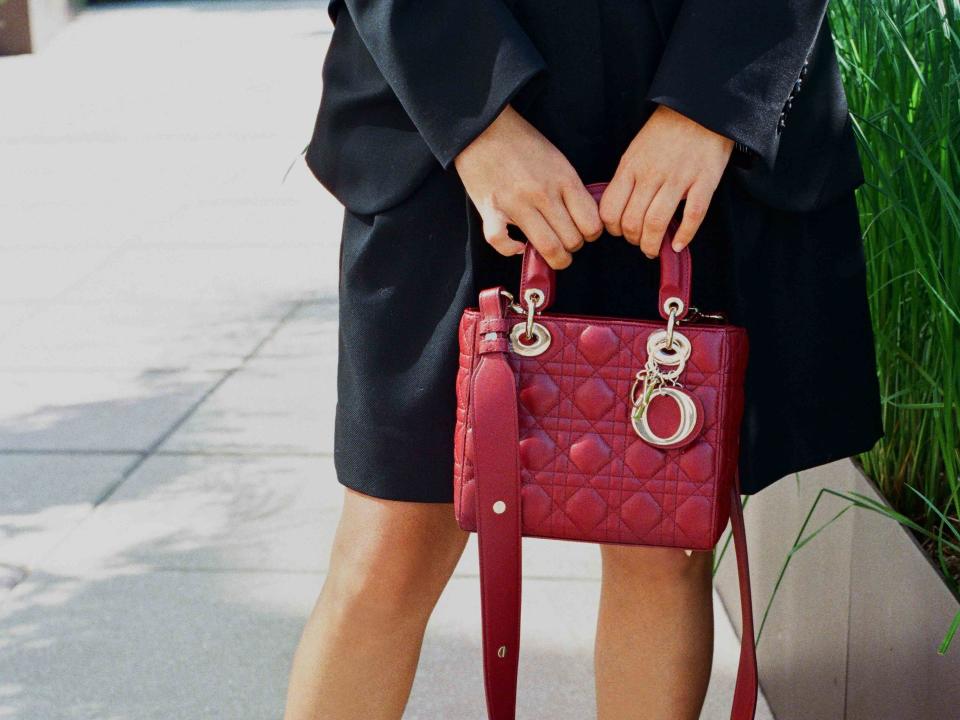
InStyle
Trends come and go, but classics are forever. With the Anatomy of an Investment Piece, we highlight the timeless styles you need in your wardrobe and break down what exactly makes them worth buying. Whether it’s a forever bag, wear-everywhere coat, or footwear staple, these fashion pieces are icons in the making.
Beyond the New Look, few styles are as synonymous with Dior as its Lady Bag. Known for its signature charms, cannage pattern, and superb craftsmanship, the handbag has, over the past three decades, earned itself a spot as one of the most recognizable and sought-after luxury goods today.
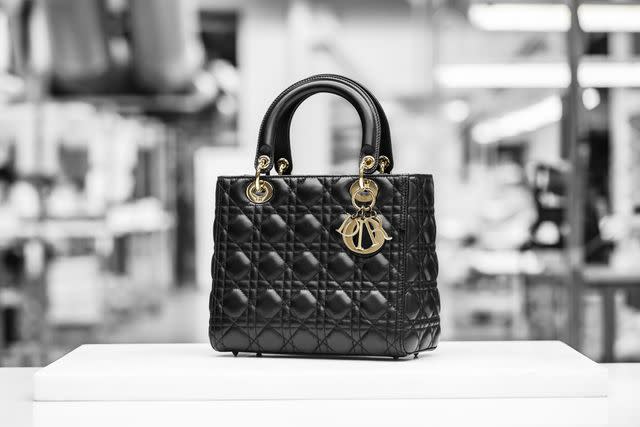
© POL BARIL
“The Lady Dior is an iconic bag with a timeless architectural form that I’ve always admired: Created in different sizes, materials, and colors, reinterpreted by numerous artists and designers, it remains an object of desire for all women,” writes Dior’s creative director Maria Grazia Chiuri via email. “It is an item of absolute perfection and extraordinary modernity.”
First introduced by the late creative director Gianfranco Ferré, the bag was released in 1995 with the name “Chouchou,” which translates to “favorite.” Decades after Christian Dior's death, Ferré paid homage to the Maison’s founder through a few of the bag's signature details.
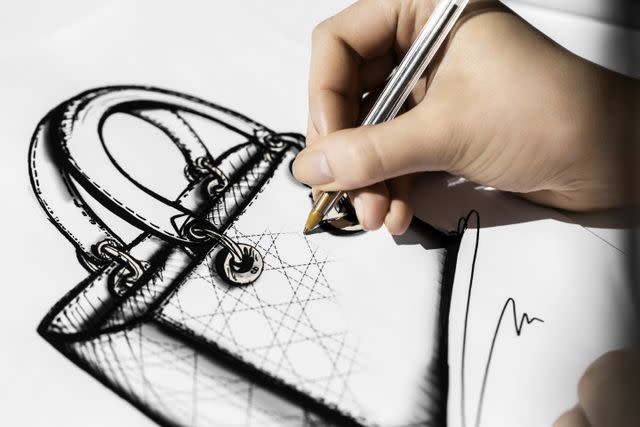
© POL BARIL
Lady Dior’s cannage pattern, for example, is a direct reference to cane chairs that were popular in Europe in the 18th and 19th centuries and that guests sat on at early Christian Dior couture shows. The pattern also ties back to Christian Dior’s passion for French aristocratic history, as they were used from the reign of Louis XV to the presidency of Napoleon III. While this pattern was originally made using rattan material, the diamond-shaped cavities are transformed into quilted protrusions on the Lady Dior bag through artful stitching. Then there are the dangling charms—“D-I-O-R”—which are a nod to the couturier’s superstitions and affinity for carrying lucky charms.

© POL BARIL
“It’s an interesting bag because it perfectly blends the traditional codes of the brand with an incredible contemporary modernism,” says Sarah Scutarro, the chief conservator at the Cleveland Museum of Art, who has also worked with the Costume Institute at the Metropolitan Museum of Art and the Museum at FIT. “It really is able to mix those two in a refreshing way.”
The bag’s successful balancing act is showcased in the iconic style of one of its most famous fans: Princess Diana. She was first given a the bag in 1995 by Bernadette Chirac, then-first lady of France. Diana was subsequently photographed wearing the handbag to so many public engagements—including the first and only time she attended the Met Gala in 1996—that it became one of her signature pieces, and was eventually christened with her sobriquet. “What I find compelling about the moment when she is wearing this bag is that it comes at the time after she has separated from Prince Charles before the divorce is final,” says Scaturro. “She was also trying to embody this blended old institution with this new single status.”
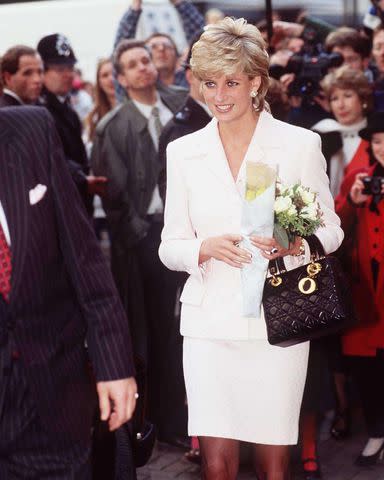
© REX/SIPA
It’s this continuous tension between the old and the new that has made the Lady Dior Bag a modern hero piece poised for endless reinvention. Today, the bag is updated regularly to meet the standards and lifestyle of 21st-century women. Some changes include a crossbody strap, which comes in a detachable form, as well as new versions of the bag, like the Lady D-Lite—an embroidered edition, introduced by Chiuri—as well as the Lady D-Joy—a rectangular reinterpretation. There’s also a Lady Dior ABC Bag, which is a customizable version that allows people to choose from a selection of hardware pins to personalize the crossbody strap. “Since my arrival at Dior, I have worked extensively on the Lady Dior bag,” says Chiuri. “I wanted to tailor it to the needs of today’s women, who want objects that are comfortable and practical to use without sacrificing their femininity.”
But, no matter how much its design may be reimagined, its craftsmanship standards don't waver. Made from plush padded lambskin, the bag’s panels are cut by hand and stitched in the signature cannage pattern. Hardware studs are hammered by hand to the bottom of the handbag for stability and to protect the leather. The house’s “CD” initials are later engraved throughout its hardware, and the charms are attached to the top handle. Scaturro adds that the artisanal labor behind the bag speaks to the couture experience that Dior has long been known for.
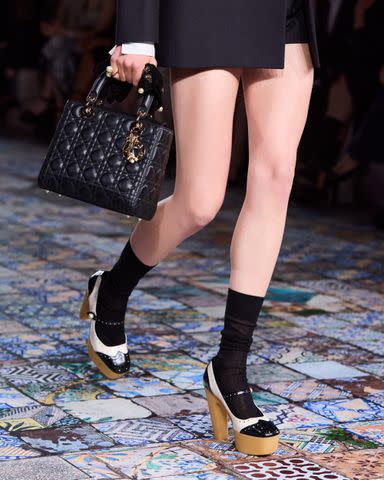
© DIOR AT THE BROOKLYN MUSEUM
That experience comes with a luxurious price tag to match, of course. The Lady Dior Bag retails at a minimum of $3,900 for the micro version, while the large size sells for $7,000. Still, pricing can vary depending on the materials, size, and exclusivity of the bag, with a medium-sized Lady Dior Bag with white resin pearls selling for $11,000. According to Rebag’s Chief Marketing Officer Elizabeth Layne, the handbag’s returns in the secondhand market are higher than most, holding about 80 percent of its value.
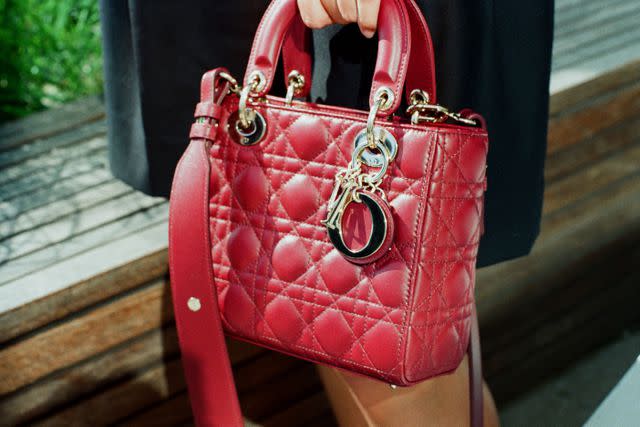
InStyle
As one of the signature luxury bags of our time, the Lady Dior Bag continues to reach new generations of customers enthused by the brand’s history, the enduring allure of Princess Diana, and the constant modernization it has undergone. “What I love about it is that it is so ladylike and demure that you can wear it with so many different outfits, even non-demure outfits,” says Scaturro. “It just becomes this really ironic counterpoint and completely luxurious.”
For more InStyle news, make sure to sign up for our newsletter!
Read the original article on InStyle.


